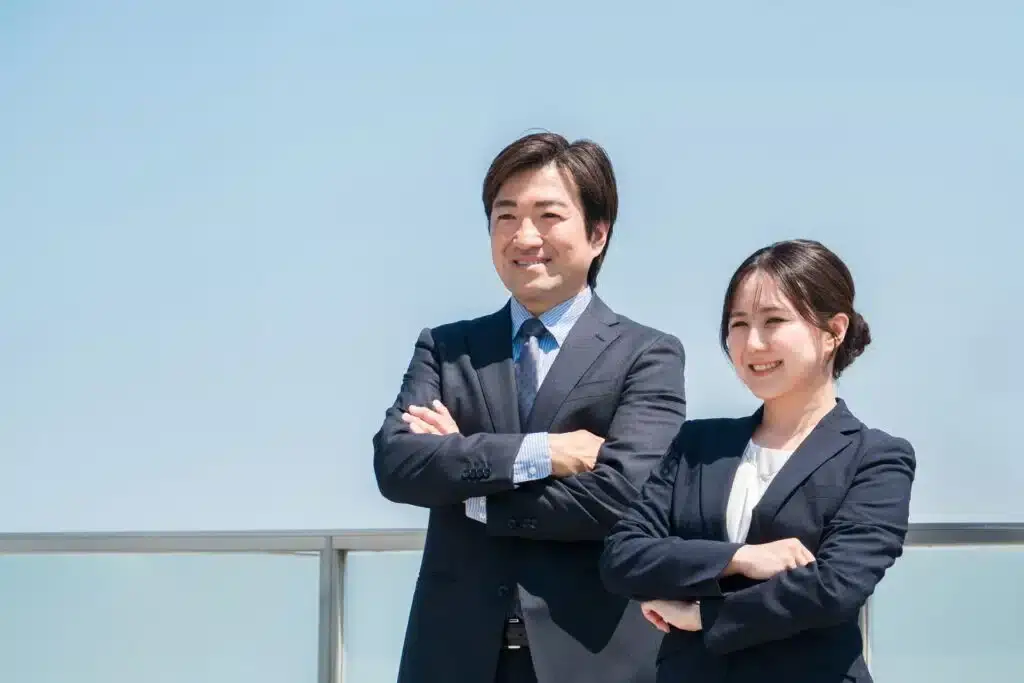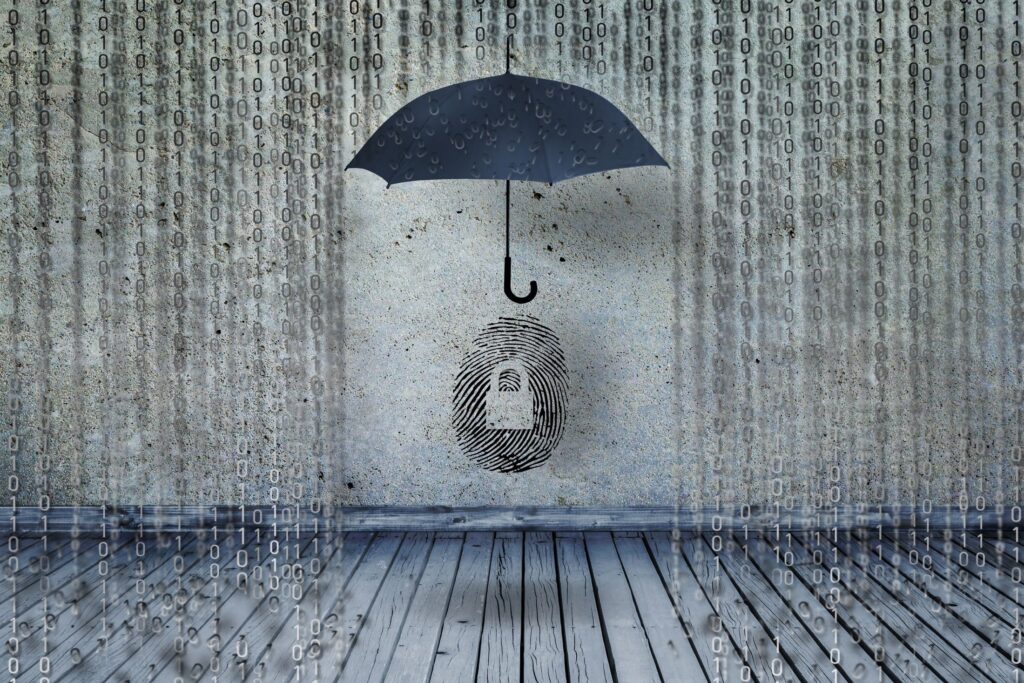Comprehensive Explanation of the Duty of Care and Legal Liability in Nursing Care Accidents

Accidents occurring in the caregiving sector not only cause significant harm to the users but also to the operators. In recent years, there has been an increase in litigation related to caregiving accidents, and cases where the legal responsibilities of operators are stringently scrutinized are not uncommon.
This article specifically explains the various legal risks faced by caregiving service providers and proposes measures to prevent such accidents.
The Duty of Care in Nursing Care Facilities

The duty of care in nursing care facilities refers to the obligation of service providers to protect the life, body, and property of users and to provide services safely. Even if the term “duty of care” is not directly mentioned in the contract, providers of nursing care services have an obligation to ensure the safety of the users’ lives and bodies. This is generally recognized as an obligation based on the Japanese Civil Code (民法) and the Japanese Long-Term Care Insurance Act (介護保険法), among other laws.
A breach of the duty of care occurs when an accident that could have been foreseen and avoided happens due to a failure to take preventive measures. For example, if a user with a history of falling accidents falls again and no measures were taken to prevent the fall, this could be considered a breach of the duty of care.
However, liability for damages in nursing care accidents is not based on the outcome alone. If the facility has taken appropriate preventive measures or if the accident was difficult to predict, it tends not to be considered a breach of the duty of care.
The legal responsibility for accidents in nursing care facilities includes not only breaches of the duty of care but also employer liability and liability for defective facilities. Employer liability refers to the responsibility of the business owner when staff intentionally or negligently cause an accident. Liability for defective facilities refers to the responsibility of the business owner when accidents are caused by the facility’s equipment or structure.
In addition to legal responsibilities, there are also moral responsibilities. These are human responsibilities that require sincere responses such as reporting accidents and apologizing, but they do not lead to legal liability.
The legal responsibility borne by individual nursing care staff in the event of an accident includes civil liability for torts and, on the criminal side, the possibility of being charged with professional negligence resulting in injury or death. However, unless the act was intentional or malicious, it is difficult to pursue individual staff members’ responsibility.
Examples of Safety Consideration Duty Violations in Nursing Care Facilities

Here, we introduce specific examples of violations of the duty of safety consideration in nursing care facilities.
Case Study on Slip and Fall Accidents
In a case study involving slip and fall accidents, we introduce an incident where a resident with a history of falls at a special nursing home for the elderly moved without pressing the nurse call button and subsequently fell, developing an acute subdural hematoma.
The court recognized the facility’s failure to install bed-leaving sensors as a breach of their duty to ensure safety and ordered compensation for damages. This judgment underscores that caregiving facilities must continuously implement the latest accident prevention measures and improve their systems accordingly. (Osaka District Court, Heisei 29 (2017) February 2nd decision)
Case Studies on Choking Accidents
We present a case study on a choking accident. In this instance, a day service user choked on food during lunch and subsequently passed away. The user’s spouse has filed a lawsuit against the facility seeking damages.
The plaintiff criticized the facility for initially admitting responsibility but later denying any legal liability. However, the court ruled that apologies or admissions of responsibility do not directly lead to legal liability. (Tokyo District Court, December 8, 2010 (Heisei 22))
There was also a case at a nursing care facility for the elderly where a person choked, leading to a state of asphyxiation and the development of hypoxic encephalopathy. The facility was found to have breached its duty of care by providing a roll without cutting it into smaller pieces despite the risk of choking. A claim of approximately 37 million yen was almost fully recognized, which included compensation for the spouse and children. (Kagoshima District Court, March 28, 2017 (Heisei 29))
Choking accidents are the second most frequent type of accident in care facilities after falls and have a high potential to lead to fatal incidents. As a result, compensation amounts tend to be higher than those for fall accidents, with cases ranging from 20 to 30 million yen not being uncommon.
Examples of Accidents Arising from Facility Equipment and Structure
There are various cases of accidents caused by faulty or insufficient equipment within facilities.
For instance, there are cases where users fall and suffer fractures or other injuries due to inadequate handrails or insufficient installation. Additionally, the cause of fall accidents can also be attributed to steps that are not clearly marked or the absence of appropriate ramps.
Falls from beds are also a serious concern. If the height of the bed rails is insufficient or the rails are not properly locked, there is a possibility that users may fall and get injured.
Slip and fall accidents in bathrooms also require attention. If the floor is slippery or anti-slip mats are not installed, the risk of users slipping and getting injured increases, necessitating caution.
If elevator maintenance and inspections are not conducted properly, it can lead to accidents where users get trapped or injured due to sudden stops.
These accidents are considered to have occurred due to problems with the facilities’ equipment or structure, thus invoking “liability for defects in the premises” on the part of the facility. This liability refers to the obligation for damages that facility managers bear when an accident occurs because the facility’s equipment or structure lacked the safety that it should normally possess.
Care facilities have a duty to properly maintain and manage their equipment and structure to ensure the safety of their users. If this duty is neglected and an accident occurs, they may be held legally responsible. Facility managers must rigorously conduct regular safety inspections and maintain an environment where users can feel safe and secure.
Examples of Accidents Caused by Inappropriate Staff Responses
Accidents caused by inappropriate responses of caregiving staff mainly include the following cases.
For instance, during meal assistance, if staff fail to properly assess a user’s swallowing function and provide food that is difficult to swallow or do not offer sufficient assistance, there is a risk of causing choking or pneumonia due to aspiration.
During bathing assistance, if staff do not properly observe the user’s condition and take their eyes off them in the bathtub or fail to use appropriate bathing aids, this can lead to drowning accidents.
Similarly, during transfer assistance, if staff overestimate the user’s physical abilities and attempt an unreasonable transfer or do not use proper assistance methods and aids, there is a potential for causing fall accidents, which requires caution.
During medication assistance, if staff misidentify the type or amount of a user’s medication, providing the wrong medication can result in side effects or health damage.
Additionally, physical restraints and abuse can lead to serious accidents that cause physical and mental pain or trauma to the user.
These accidents are often caused by staff negligence, lack of knowledge, or malice. In such cases, the facility may incur “employer liability,” which refers to the responsibility for compensation that a facility, as the employer, bears when its staff, during the course of their duties, intentionally or negligently cause damage to a third party.
Facility managers have a duty to provide appropriate education and training to staff and to establish a system that can deliver safe caregiving services. It is also important to consider the health and mental state of the staff, preventing inappropriate responses due to overwork or stress.
Legal Responsibilities of Nursing Care Facilities

Here, we will explain the potential legal responsibilities that nursing care facilities may face.
Breach of Contractual Obligations
Nursing care facilities enter into care service agreements with their clients. Based on these agreements, the facilities are obligated to provide safe care services to the clients. If a facility fails to fulfill this obligation and causes harm to a client, it may be held liable for breach of contractual obligations.
For breach of contractual obligations to be established, the following conditions must be met:
- Existence of a Contract: A contract has been concluded between the nursing care facility and the client.
- Non-performance of Obligations: The facility has failed to fulfill its contractual obligations.
- Occurrence of Damage: The client has suffered some form of damage.
- Causal Relationship: The non-performance of obligations is the cause of the damage incurred.
If a breach of contractual obligations is recognized, the facility is required to compensate the client for damages. The extent of the compensation, which may include medical expenses, lost profits, and solatium, will be determined according to the specific damages suffered by the client.
Tort Liability
In the legal responsibilities of nursing care facilities, tort liability is also included. This liability arises when the facility or its staff, through intent or negligence, cause harm to users or third parties.
Cases where tort liability may be questioned primarily include the following:
- Abuse by staff members
- Accidents due to staff negligence
- Accidents due to facility management deficiencies
In these cases, the facility may be subject to claims for damages based on tort liability.
Employer Liability
In caregiving facilities, operators employ staff to provide services to users. Therefore, if an employee causes harm to a user through negligence or intentional acts during their duties, the operator may also bear employer liability. Employer liability is stipulated under Article 715 of the Japanese Civil Code (民法第715条), and the operator is responsible as long as the employee’s actions are related to the execution of their duties.
For example, the following cases can be cited:
- If an employee carelessly causes a user to fall and suffer a fracture
- If an employee commits abusive acts such as verbal abuse or violence against a user
- If an employee leaks personal information of a user
These are instances where employer liability may be questioned. However, if the operator has exercised appropriate care in the selection and supervision of employees, or if damage could have occurred despite appropriate care, there may be cases where employer liability is exempted.
Individual Staff Liability
In the event of an incident in caregiving, individual staff members may also be held legally responsible.
The civil liabilities that an individual staff member might bear primarily involve tort liability. This responsibility arises when someone intentionally or negligently infringes upon the rights or legally protected interests of another person, as stipulated in Article 709 of the Japanese Civil Code (民法第709条).
For example, in cases such as:
- When a staff member intentionally commits an abusive act towards a client, causing injury
- When a staff member causes a client to fall and fracture a bone due to gross negligence
In such cases, the individual staff member may be subject to claims for damages based on tort liability.
As for criminal liabilities that an individual staff member might incur, one can cite the Japanese Professional Negligence Resulting in Death or Injury (業務上過失致死傷罪). This crime applies when a person causes injury or death due to a lack of necessary care in their professional duties or due to serious negligence.
For example, in cases such as:
- When a staff member provides significantly inappropriate care, resulting in the death of a client
- When a staff member neglects a client, leading to the client sustaining serious injuries
In such cases, the individual staff member may also be charged with Professional Negligence Resulting in Death or Injury.
While it is rare for individual staff members to be held legally responsible, in cases of intentional abuse or accidents due to serious negligence, they may face not only civil and criminal liabilities but also severe administrative penalties such as revocation of qualifications.
The Scope of Legal Responsibility in the Event of Nursing Care Accidents

What legal responsibilities arise when a nursing care accident occurs? We will explain in detail the differences between civil and criminal liabilities.
Definition and Scope of Civil Liability
Civil liability primarily arises from tortious acts, where intentional or negligent actions infringe upon the rights or legally protected interests of others.
In the case of nursing care accidents, staff members may be held liable for tortious acts if they fail to fulfill their duty of care or intentionally commit abusive acts. The compensation claims that victims can make are mainly categorized into four types:
- Actual damages
- Consequential damages
- Compensation for emotional distress
- Legal fees
Actual damages refer to costs that have actually been incurred due to the accident, such as medical treatment, hospitalization, travel expenses to medical appointments, medication, medical equipment, and nursing care products.
Consequential damages refer to the loss of profits that would have been earned if the accident had not occurred. In nursing care accidents, this typically includes loss of future income or pensions. The calculation of lost profits takes into account factors such as pre-accident income, age, and employment status.
Compensation for emotional distress is awarded for mental suffering. This includes compensation for hospitalization, compensation for permanent disability, and compensation for death, with the court determining the amount based on previous case law and the extent of the harm suffered.
Legal fees are the costs incurred when hiring a lawyer. Depending on the case, these fees may be included in the compensation amount awarded.
Related article: What happens if you are sued for a nursing care accident? Comprehensive explanation of facility’s compensation liability and measures[ja]
Definition and Scope of Criminal Liability
Criminal liability refers to the penalties imposed for criminal acts. In the case of nursing care accidents, the crime of professional negligence resulting in injury or death is often applicable. This crime is established when a person causes injury or death due to a failure to exercise the necessary care required in their professional duties or due to serious negligence.
If an individual is charged with professional negligence resulting in injury, they may face imprisonment or a fine. However, there are no direct penalties for a nursing care business entity, as criminal liability is generally borne by natural persons (individuals), and corporations (companies) are considered to lack criminal liability capacity.
Strategies for Fulfilling the Duty of Care

Here, we will discuss the measures that caregiving service providers should implement to fulfill their duty of care.
Implementing Appropriate Assessments and Individualized Care
In order for care facilities to fulfill their duty of care, it is crucial to conduct assessments that understand and analyze the residents’ living environment and concerns, and to organize the collected information to standardize individualized care. Comprehensive assessments should be carried out, including prior information such as the residents’ medical history and family background, current condition, and their wishes and goals. After these assessments, it is essential to grasp the true needs of the residents and provide high-quality, individualized care.
By appropriately fulfilling their duty of care, care facilities ensure the safety and peace of mind of their residents.
Regular Status and Safety Checks
In the field of caregiving, the condition of clients can change at any moment, making regular status and safety checks extremely important in fulfilling the duty of care.
To prevent caregiving accidents before they happen, various status checks are necessary. It is crucial to regularly patrol the facility and check on the clients’ conditions. Pay special attention to areas with a high risk of falls and slips, and to clients who spend a lot of time alone.
Actively engaging with clients to understand changes in their health and mood, as well as any issues they may be facing, is also vital. Through communication, you can grasp the clients’ conditions and provide the necessary support.
Documenting changes in clients’ conditions and the care provided is important as well. These records are useful for sharing information and investigating the causes in the event of an accident.
For safety checks, it is necessary to regularly inspect the facility’s equipment and supplies to ensure there are no damages or malfunctions. Pay particular attention to safety-related facilities such as handrails, floors, bathrooms, and beds, and inspect them thoroughly.
Sharing incidents among staff that did not lead to accidents but were close calls (near-misses) and considering countermeasures is also crucial. Sharing near-misses helps prevent accidents.
Assessing each client’s condition and environment to predict risks such as falls, choking, and abuse is important. By creating individual care plans based on risk assessments, accidents can be prevented before they occur.
Regular status and safety checks are important for the following reasons:
- Prevention of accidents
- Prompt response
- Clarification of responsibility
- Improvement of service quality
- Enhancement of staff awareness
Care facilities are required to thoroughly conduct regular status and safety checks to protect the safety of clients and provide a secure environment.
Implementing Education and Training for Staff
Continuous education and training for staff in caregiving facilities are essential to fulfill the duty of care. It is necessary to provide a wide range of training, including the acquisition of specialized knowledge and skills, enhancement of safety awareness, development of ethical perspectives, improvement of communication skills, and mental health measures.
Please implement effective training programs that include regular sessions, practical content, the use of external instructors, and the establishment of follow-up systems. Various benefits can be expected, such as improved staff capabilities, enhanced service quality, reduced accidents, and increased staff retention rates.
Education and training for staff represent an investment in the future, and caregiving facilities must actively engage in these efforts.
Creating an Environment for Accident Prevention
In order to prevent accidents in nursing care facilities, it is essential to implement measures against falls, choking and ingestion errors, infections, fires, and disasters. Specifically, physical environment improvements such as installing handrails, selecting appropriate flooring materials, arranging meal environments, cleaning and disinfecting, and securing evacuation routes are crucial. By conducting regular inspections and maintenance, being considerate of users and staff, seeking expert opinions, and thoroughly documenting and improving, we can create a safe and comfortable environment that enables the provision of high-quality nursing care services.
The Importance of Nursing Care Incident Reports

Nursing care providers are obligated to submit a Nursing Care Incident Report when an accident occurs. This article will explain what a Nursing Care Incident Report is and why it is so important.
The Legal Obligations of Nursing Care Accident Reports
A nursing care accident report is a document that must be submitted to the authorities detailing the specifics of an incident when a nursing care accident occurs. These reports are not merely records; they also embody legal obligations.
Related laws such as the Japanese Long-Term Care Insurance Act and the Japanese Welfare Law for the Elderly mandate the reporting of accidents to the authorities, requiring the submission of these reports. The purpose is to prevent the recurrence of accidents and to improve the quality of services by enabling the authorities to grasp the situation and provide necessary guidance and advice.
The report must include detailed information about the date and time of the accident, location, circumstances, cause, and response. Failure to provide accurate reports can result in administrative penalties or reductions in nursing care fees. Therefore, it is essential to recognize the importance of these reports and ensure their proper preparation and submission.
Analysis of Accident Causes and Consideration of Recurrence Prevention Measures
The nursing care accident report is a vital tool aimed at preventing the recurrence of accidents. The report delves deeply into the causes of accidents and considers specific measures to prevent them from happening again.
In analyzing the causes, we examine from multiple perspectives why the accident occurred. It is essential to identify the causes from various angles, such as the condition of the service user, the response of the staff, and environmental factors, and to clarify the issues.
When considering recurrence prevention measures, we develop concrete plans based on the cause analysis. We combine a wide range of measures, such as staff training, review of care methods, and environmental improvements, to effectively prevent accidents from recurring.
Through the creation of the report, it is crucial to transform accidents into lessons and strive to provide safer nursing care services.
Specific Methods and Points of Caution for Report Preparation
When preparing a nursing care incident report, it is crucial to record the facts accurately and objectively. Emotional expressions and subjective opinions should be avoided, and the situation should be described concretely so that anyone reading the report can understand the circumstances.
There are several important points to grasp when creating a nursing care incident report.
The report should clearly state the ‘when’, ‘where’, ‘who’, ‘what’, ‘why’, and ‘how’—the 5W1H—and record the details of the situation at the time of the incident.
Reports must be recorded from an objective viewpoint, focusing solely on the facts, and personal interpretations or conjectures must be avoided. It is necessary to use simple language instead of jargon to ensure that the report is understandable to the reader.
It is also important to create the report as soon as possible while the memory is still fresh. Finally, pay careful attention to the handling of personal information, considering the privacy of the individuals involved.
With these points in mind, it is advisable to create reports using standard formats provided by the Ministry of Health, Labour and Welfare. Accurate report preparation can lead to the prevention of accident recurrence and the improvement of service quality.
Related article: What is the Importance of a Nursing Care Accident Report? Explanation of How to Write and Points of Caution[ja]
Summary: Understanding the Importance of Duty of Care and Implementing Comprehensive Measures

Nursing care accidents are something everyone wants to avoid. However, in the unfortunate event of an accident, nursing care facilities and staff may incur legal responsibilities. By understanding various legal liabilities such as breach of duty of care, tort liability, and employer liability, and by taking appropriate measures, it is possible to prevent accidents before they happen and protect the safety of both users and staff.
Nursing care providers are required to continuously strive to offer safe and reliable care services.
Guidance on Measures by Our Firm
The caregiving industry is governed by a complex web of laws, including the Japanese Long-Term Care Insurance Act, the Japanese Elderly Welfare Act, and the Japanese Companies Act. Monolith Law Office serves as the legal advisor for the National Association of Caregiving Service Providers and caregiving service providers across all prefectures, possessing extensive know-how in laws related to caregiving businesses.
Areas of practice at Monolith Law Office: Corporate Legal Affairs for IT & Startups[ja]
Category: General Corporate
Tag: General CorporateIPO





















